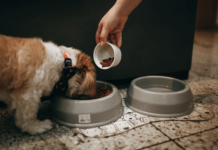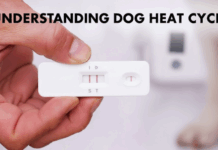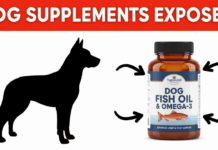Last Updated on July 30, 2024 by Dog Lover
Reasons for Rough Dog Paws
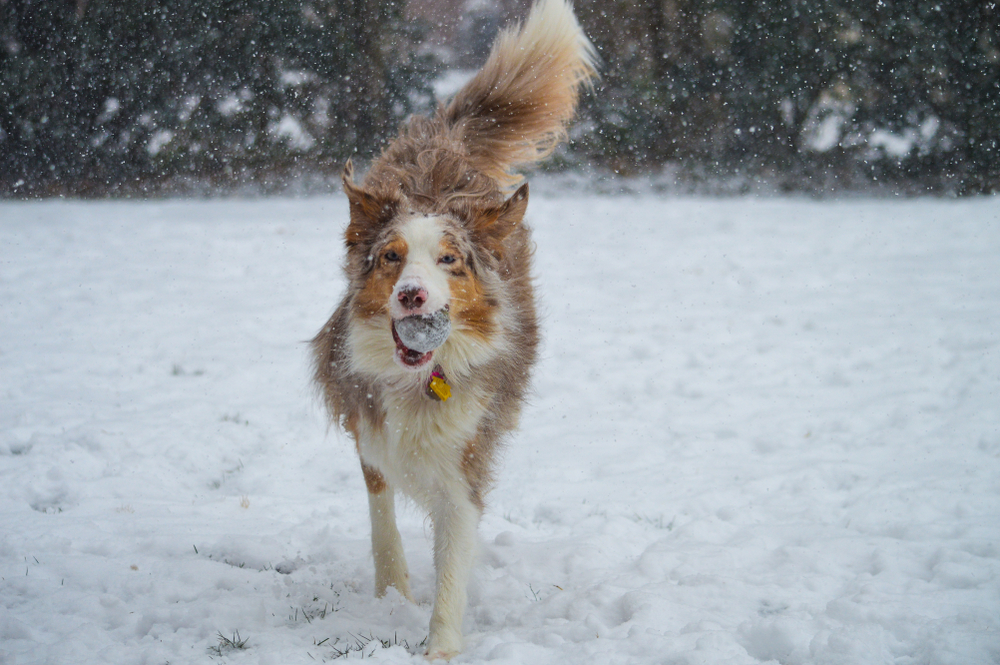
Cold Weather
In cold weather, your dog’s paw pads can become dry or irritated, leading to cracking and discomfort. Despite their fur coats, dogs’ paw pads are exposed to icy surfaces, causing damage over time.
Prolonged exposure to snow, ice, or cold pavement can strip away natural oils, leaving paws vulnerable to injury and roughness. To prevent this, limit your dog’s exposure to cold surfaces and consider using dog boots during walks.
Hot Surfaces
Hot pavement can burn your dog’s paws during summer. Walking on hot sidewalks can cause burns, blisters, and cracks. Even when the air temperature feels comfortable, surfaces like asphalt can become extremely hot and harmful to your dog’s paws.
To protect their paws, walk your dog in cooler hours, either early in the morning or late in the evening. Always check the pavement temperature with your hand before heading out.

Rough Terrain
Hiking or walking on uneven surfaces can roughen your dog’s paw pads. Just like humans develop calluses, dogs’ paws adapt to rough terrain, which can lead to hard, rough pads.
If your dog enjoys outdoor adventures, gradually introduce them to rougher terrains to allow their paws to build up resilience.
However, always inspect their paws after hikes and clean any debris or dirt that might cause irritation.
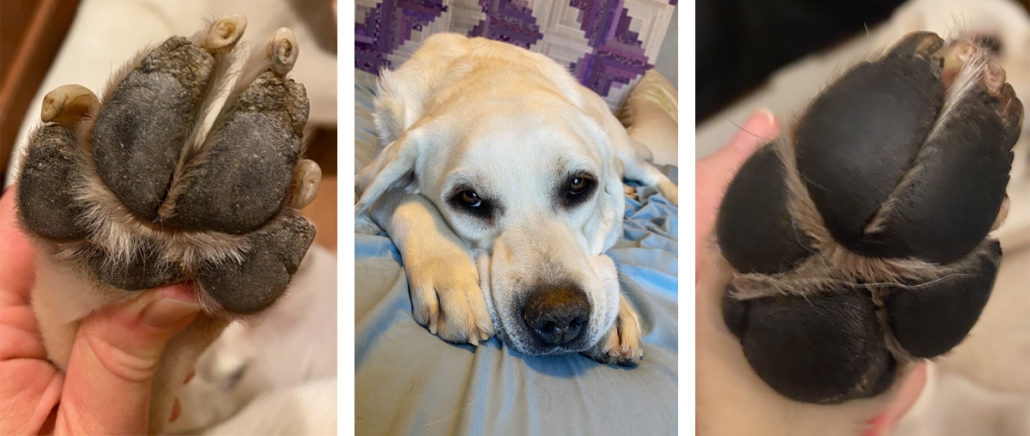
Hyperkeratosis
Hyperkeratosis causes excessive keratin production, resulting in thick, dry skin on paw pads. This condition is common in breeds like Labradors and Bulldogs and can lead to cracking and infections.
The thickened skin can become painful and make it difficult for your dog to walk comfortably.
Regular check-ups with your vet can help manage this condition, and they might recommend specific treatments or dietary changes to alleviate symptoms.

Health Issues
Underlying health conditions like allergies, autoimmune diseases, and mineral deficiencies can cause rough paw pads. Conditions like pododermatitis, Cushing’s disease, and zinc deficiency can affect paw health.
For instance, pododermatitis can cause inflammation and swelling, leading to painful sores if untreated.
Autoimmune conditions like pemphigus foliaceus can make paw pads thick, crusty, and cracked. Ensuring a balanced diet and regular vet visits can help identify and treat these issues early.
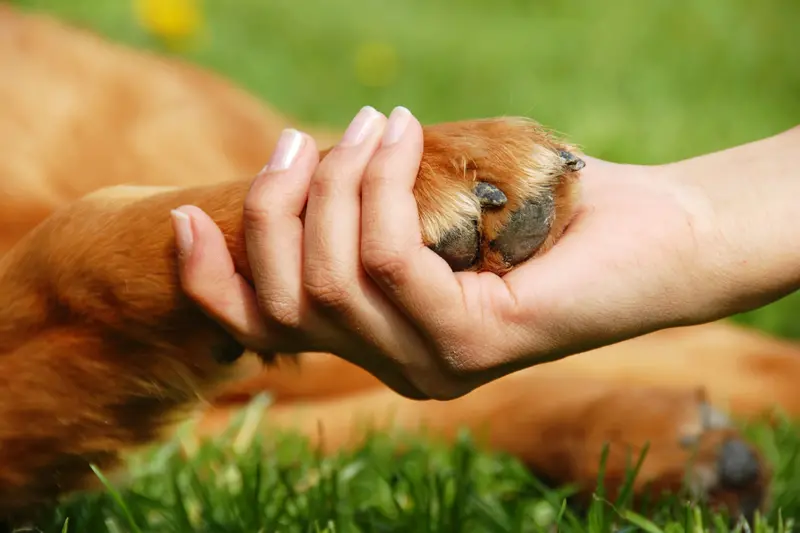
Protecting Your Dog’s Paws
Use Doggy-Specific Balm
Dog-specific balms create a protective layer, healing and nourishing rough skin. These salves can prevent cracking and help heal abrasions.
Regularly applying balm can keep the paw pads moisturized, especially after walks on rough or extreme surfaces. Look for balms with natural ingredients like shea butter and beeswax for the best results.
Buy Paw Protectors
Paw protectors cover your dog’s feet, shielding them from extreme temperatures and rough surfaces. They can be especially useful in harsh weather conditions.
Not all dogs are comfortable wearing protectors, so it might take some time for them to get used to it. Start with short periods indoors and gradually increase the duration.
Ensure the protectors fit well and do not cause additional discomfort.
Ensure Appropriate Hygiene
Keep your dog’s paws clean and neatly trimmed. Regular hygiene prevents bacteria buildup, which can lead to cracked and dry paw pads.
After walks, especially in muddy or wet conditions, wipe your dog’s paws with a damp cloth and dry them thoroughly.
Trim the fur around their paws to prevent dirt accumulation and check for any signs of injury or infection.

Try an Oil
Applying coconut or olive oil can moisturize and protect paw pads, addressing minor rough areas and cracks. These natural oils have antibacterial and antifungal properties, which can prevent infections.
Gently massage the oil into the paw pads after cleaning, and let it absorb fully. This simple routine can keep your dog’s paws soft and healthy.
Conclusion
Dry paw pads can often be managed at home, but it’s important to consult your vet if your dog experiences soreness or pain.
Chronic conditions may require medications or over-the-counter treatments to maintain your dog’s paw health.
Ensuring a combination of preventive care and immediate treatment can protect your dog’s paws from roughness and discomfort.
By addressing the causes and implementing these protection tips, you can help keep your dog’s paws healthy and comfortable.
Regularly check your dog’s paws for any signs of roughness or injury and take prompt action to treat any issues.
Your dog’s paw health is essential for their overall well-being, and with proper care, you can ensure they remain active and happy.
Why Are My Dog’s Paws So Rough: 5 Vet-Verified Reasons & Protection Tips
Why are my dog’s paw pads rough and cracked?
Rough and cracked paw pads can be caused by several factors, including exposure to cold weather, hot surfaces, rough terrain, or conditions like hyperkeratosis. Health issues such as allergies and autoimmune diseases can also contribute to this problem. Regularly inspecting and caring for your dog’s paws can help address these issues.
How can I protect my dog’s paws from extreme temperatures?
To protect your dog’s paws from cold weather and hot surfaces, consider using dog boots or paw protectors. Walking your dog during cooler parts of the day can also minimize exposure to extreme temperatures. Additionally, using a dog-specific balm can help keep their paw pads moisturized.
What should I do if my dog has hyperkeratosis?
If your dog has hyperkeratosis, which causes thickened, dry skin on the paw pads, consult your vet for a proper diagnosis. Treatment may include medications and dietary changes to manage the condition and prevent complications.
How can I keep my dog’s paws clean and healthy?
To maintain your dog’s paw health, ensure you clean their paws after walks, especially in muddy or snowy conditions. Regularly trim the fur around their paws to prevent dirt buildup, and use a dog-specific balm to keep the pads moisturized.
What are the signs of a more serious health issue affecting my dog’s paws?
Signs of serious health issues include persistent cracking, swelling, or pain. If you notice these symptoms, especially if they’re accompanied by other signs like itchiness or changes in behavior, consult your vet to determine the underlying cause and appropriate treatment.
These FAQs address common concerns and offer guidance on managing and protecting your dog’s paw health.
- https://www.fourpaws.com/pets-101/health-and-wellness/dry-dog-paws
- https://vcahospitals.com/know-your-pet/pododermatitis-in-dogs
- https://ascotvet.com.au/endocrine-diseases-of-dogs/#:~:text=Changes%20in%20skin%20and%20coat,and%20experience%20poor%20wound%20healing.
- https://vcahospitals.com/know-your-pet/nutrition-skin-and-dogs#:~:text=The%20coat%20takes%20on%20a,appropriate%20levels%20in%20the%20diet.
- https://www.veterinary-practice.com/article/canine-hepatocutaneous-syndrome
- https://vcahospitals.com/know-your-pet/pemphigus-in-dogs

